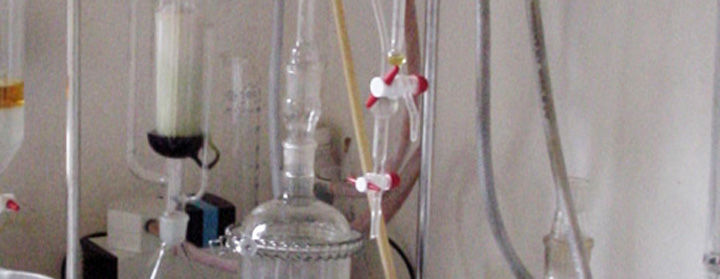
Since citrus oils are usually obtained by the grating process (instead of steam distillation), they always contain valuable, relatively large molecules such as flavonoids.
As a result of the newer regulations for cosmetic products, these are often distilled away because the „bad“ furocoumarins may not or hardly be contained. However, these ensure a better shelf life of the citrus oils, which do not last long anyway,
they have a mood-enhancing effect and,
according to various studies, even (in vitro) antitumor.
This mix of monoterpenes (especially para-cymene (p-cymene), myrcene and both pinene molecules) gives lemon oil a certain pain-relieving effect.
Pinene has a slightly stimulating effect.
Esters with the right monoterpenols have an antispasmodic, antispasmodic and relaxing effect.
The furocoumarins it contains enhance this gently calming effect. Animal experiments showed that lemon oil has a cramp-preventing effect. [Lopes Campêlo LM, de Lima S, Mendes Feitosa C, Mendes de Freitas R. Evaluation of central nervous system effects of Citrus limon essential oil in mice. Revista Brasileira de Farmacognosia Brazilian Journal of Pharmacognosy 21(4): 668-673, Jul./Aug. 2011].
Substances *)
monoterpenes:
65% limonene
2% alpha pinene
12[ beta pinene
9% gamma terpinene
0.2% alpha terpinene
0.4% terpinolene
0.4% alpha thujas
1.5% beta myrrene
0.3% p-cymene
camphene, trans icimen,
2% Sabines,
0.3% phellandrene
cadinen
sequiperpenes
0.3% beta caryophyllene
Alpha Bergamot
0.4% beta-bisalbolene
dipentene
montoterpenols
0.1% geraniol
0.1% nerol
0.2% linalool
4-terpineol
0.2% alpha-terpineol
aldehydes
0.9% neral
2-3% Geranial **)
0.1% citronellal
0.2% nonanal
0.2% octanal,
Decanal
ester
0.7% neryl acetate
0.3-0.7% geranyl acetate
octyl acetate
linalyl acetate
citronellyl acetate
ketones
0.1% methyl heptanone
Other
1.5% coumarins and furocoumarins
e.g. 0.6% bergapten, 0.2% bergamottin
**) Lemon scent/flavor is often replaced by „citral“. This can either be produced synthetically or obtained naturally from e.g. lemongrass. „Citral“ is a generic term for geranial and neral
Even if citral is very reminiscent of lemon scent: if you look at the many different ingredients, even the „non-chemist“ will realize that it cannot be equated with lemon oil. Often, however, this scent/taste impression is enough for many producers.
On the other hand, I cannot confirm the often used argument that the normal consumer would not notice the difference. In most cases, complete laypeople can even recognize differences in the quality of lemon oils.
*)
Effects of the individual substance classes
monoterpenes
Antiseptic, antiviral, bactericidal, immunostimulant
Some have anti-cancer effects (d-limonene),
analgesic, local anesthetic,
concentration-enhancing,
sesquiterpenes
Antiphlogistic (anti-inflammatory), antipyretic (fever reducer), skin-generating
Antiallergic, immunomodulating, antioxidant, bactericidal
reassuring
alcohols
(the term refers to the structure- with the suffix „ol“, there are many different substances that are structured in this way with different effects. What we normally think of as „alcohol“ is just one of them
monoterpenols
Antiseptic, bactericidal, antiviral, fungicidal
skin friendly
Aquaretic (promotes water elimination)
mood-enhancing
monoterpene ketones
Secretolytic (promotes production of a thin mucus)
spasmolytic (antispasmodic)
encouraging
Epithelialising, promoting granulation (wound healing)
aldehydes
anti-infective. fungicide (“fungus-killing”), virucidal (“virus-killing”)
anti-inflammatory (anti-inflammatory), antipyretic (against fever),
encouraging
ester
Antiphlogistic (anti-inflammatory)
Very skin friendly
Strongly spasmolytic (antispasmodic)
Fungicide (kills fungi and their spores)
Stimulating lymph flow
Coumarins
Antibacterial, immunostimulating,
stimulating lymph flow,
anti-inflammatory (anti-inflammatory)
spasmolytic (antispasmodic)
powerful antioxidant (when the coumarins have been removed, the oil has a much lower durability)
Like all citrus fruits, the lemon is rich in phosphorus and pectin. 100 grams of lemon contain on average:
Energy 151-235kJ (35-56kcal)
Water 84-90g
Fat 0.6g
Potassium 149mg 7%*
Calcium 11mg 1%*
Magnesium 28mg 9%*
Phosphorus 20mg 3%*
vitamin C 51mg 71%*
* Proportion of the daily requirement of an adult , Crops > Lemons and limes. In: FAO Production Statistics 2020. fao.org


Recent Comments